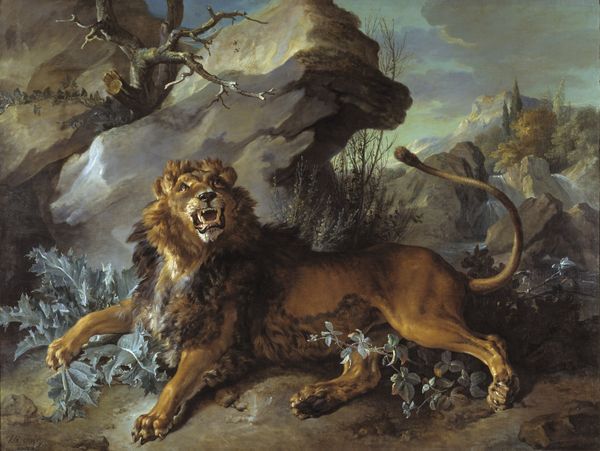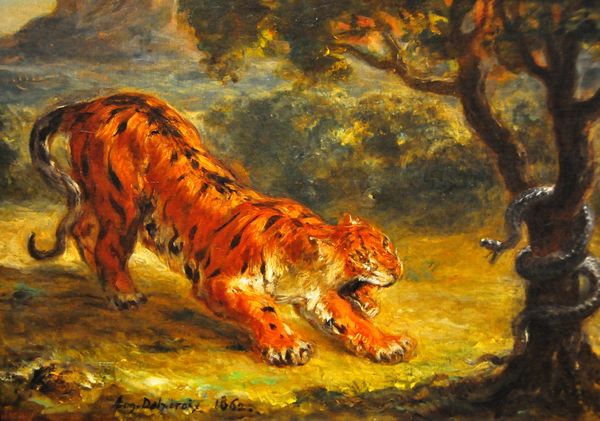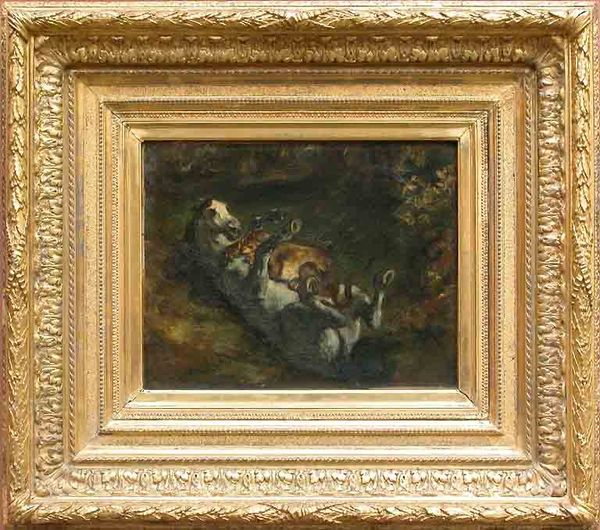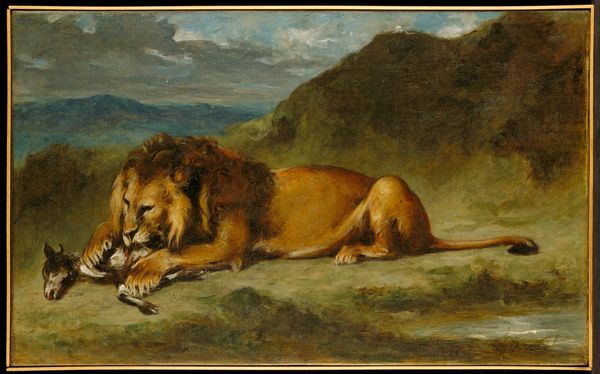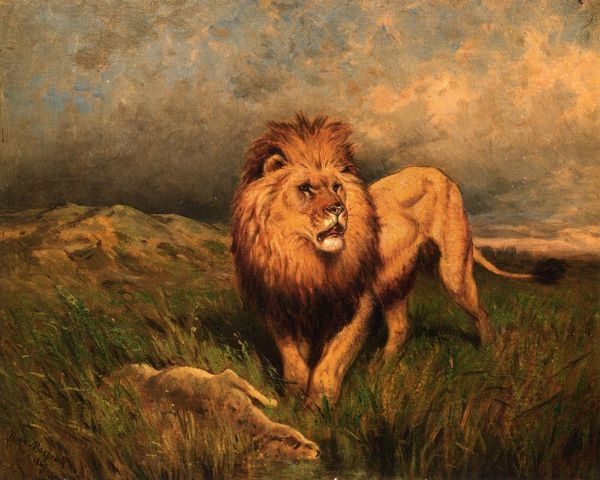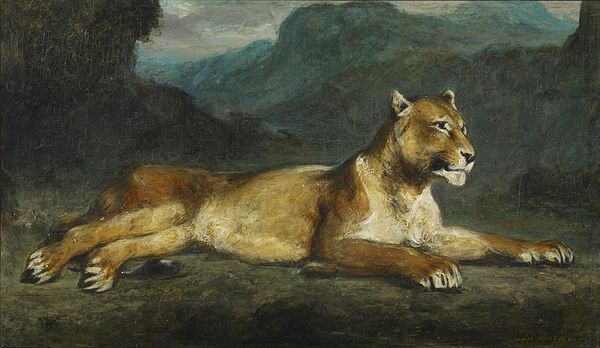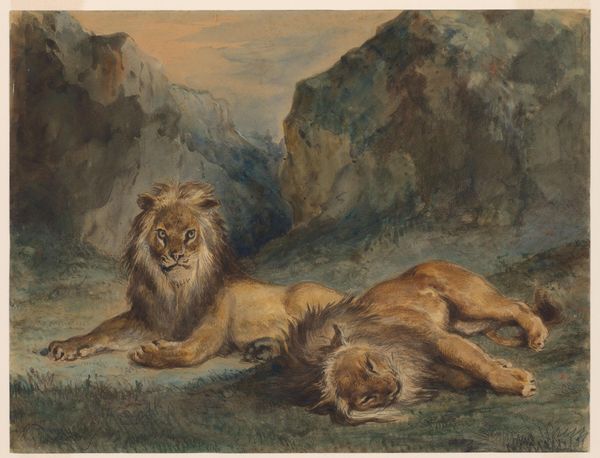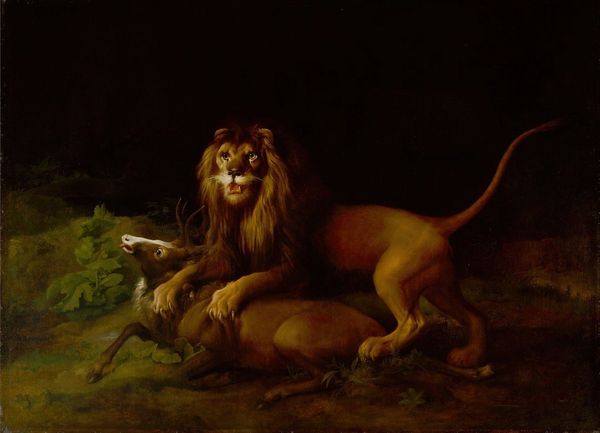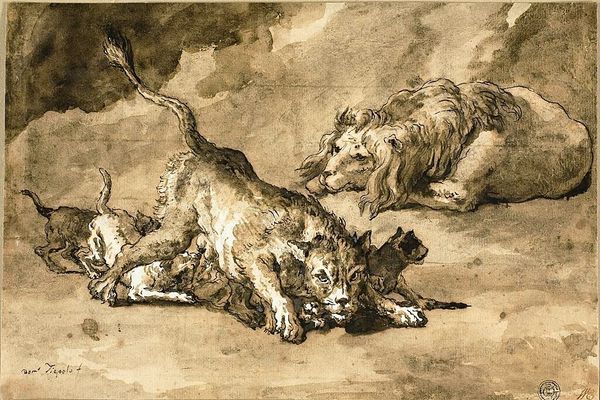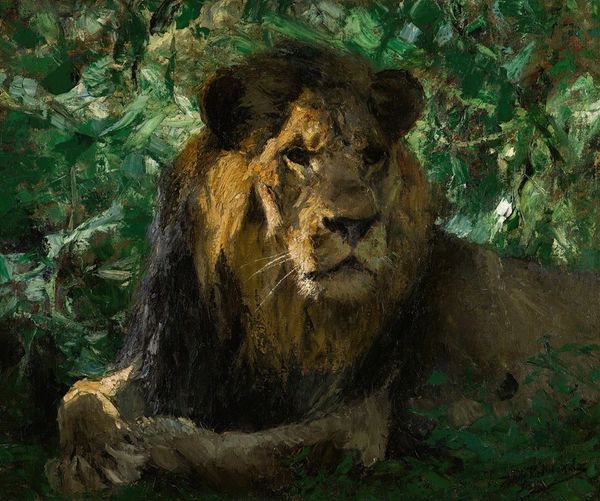
Copyright: Public domain
Curator: This is Eugène Delacroix's "Lion and Alligator," painted in 1855 using oil paints. Editor: Right off the bat, it's got a dramatic feel! Sort of murky light, and a definite sense of predator-prey tension playing out. Curator: Absolutely, Delacroix captures that intensity. This painting reflects an ongoing fascination of the time with exotic animals and dramatic scenes. The focus on the raw power of nature aligns strongly with the Romanticism movement. Editor: Romanticism loved a bit of theatricality, didn't it? This is less about objective reality and more about stirring feelings of awe and even terror. The slightly blurred details amplify that, making it more of an impression than a crystal-clear depiction. Like he wants us to *feel* the scene. Curator: He really wants us to consider that fine line between dominance and vulnerability, a frequent theme in Romanticism. There is such violence in it but you almost feel sympathy for the alligator. Delacroix had made studies in zoos, so, for the painting to still look staged speaks volumes. Editor: So, thinking about its cultural impact, how did a painting of exotic animals presented as almost mythic reflect back on how people viewed colonialism or power dynamics at the time? Curator: That's a very astute question! These images served to reinforce notions of European superiority. Paintings like this allowed people to vicariously experience exotic lands and conquer nature without leaving their homes. The display of the subjugation of a dangerous animal speaks to the presumed control that society has over its environment and the unknown "other." Editor: I guess the image hits differently today, now we see animals less as representations of 'wild otherness' and more as part of an interconnected ecosystem under threat. Curator: Exactly. Our evolving relationship with the natural world changes the way we interpret these artworks, adding new layers of complexity to an already rich image. It goes to show the influence of visual imagery in influencing perceptions and reflecting sociopolitical realities. Editor: Thanks! Something to really ponder as you observe Delacroix’s intensity on the canvas.
Comments
No comments
Be the first to comment and join the conversation on the ultimate creative platform.


